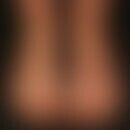Synonym(s)
HistoryThis section has been translated automatically.
Hutchinson 1878; Haxthausen 1918; Fox 1939; Escalona 1959; Lopez-Gonzales 1961;
DefinitionThis section has been translated automatically.
Rare, chronic, idiopathic photodermatosis leading to scarring, especially in children and adolescents, with the development of prurigo and eczema-like skin changes that occur preferentially in areas exposed to light. Considered by some authors to be a special form of polymorphic light dermatosis . It can severely impair the quality of life
You might also be interested in
ClassificationThis section has been translated automatically.
Two forms are distinguished by some authors:
- Non-American actinic prurigo with partial symptoms of atopic dermatitis, polymorphic light dermatosis, hydroa vacciniforme and persistent light reaction.
- American (hereditary) actinic prurigo occurring in Indians in North and Latin America. There it is called "hereditary polymorphic light dermatosis" or "familial actinic prurigo".
Occurrence/EpidemiologyThis section has been translated automatically.
More common in indigenous South American populations (prevalence in Mexicans is up to 5% of the population), mestizos and Eskimos; also occurs sporadically in Europe.
EtiopathogenesisThis section has been translated automatically.
The disease is regarded as a variant of polymorphic light dermatosis and thus as a delayed-type hypersensitivity reaction to a photo-induced antigen. Depending on ethnicity, different HLA-restrictions (e.g. HLA-A28, HLA-B39, HLA-DR4) have been observed. The action spectrum for the provocation of pathological skin reactions lies in both the UVB and UVA range with a predominance of UVA.
There is evidence of an abnormal immune response with an increase in CD4+Tlymphocytes. The presence of IgE, eosinophils and mast cells indicates that this may be a hypersensitivity reaction.
ManifestationThis section has been translated automatically.
LocalizationThis section has been translated automatically.
ClinicThis section has been translated automatically.
Immediately after radiation exposure, development of an early urticarial phase. This slowly changes into a persistent, lichenified dermatitis. Subsequently, or overlapping, the typical pruriginous skin changes develop in the light-exposed areas, as well as scattered reactions. Mostly a year-round course with worsening in summer. Conjunctivitis and cheilitis of the lower lip have been described.
HistologyThis section has been translated automatically.
Skin biopsies show hyperkeratosis, spongiosis and acanthosis in the epidermis with lymphocytic perivascular infiltration in the dermis. A biopsy of the labial mucosa often shows lymphoid germinal centers in the lamina propria, which can help to differentiate actinic prurigo from polymorphous light dermatosis. Studies have also described an infiltration of eosinophils and mast cells in the underlying mucosa of the affected lesions, which correlates with a delayed type IVb hypersensitivity reaction.
DiagnosisThis section has been translated automatically.
Differential diagnosisThis section has been translated automatically.
Complication(s)(associated diseasesThis section has been translated automatically.
External therapyThis section has been translated automatically.
Physical, in particular textile light protection. See below for photoprotective agents.
Topical corticosteroids are helpful in the acute stage.
Radiation therapyThis section has been translated automatically.
Internal therapyThis section has been translated automatically.
In severe, therapy-resistant cases, immunosuppressive treatment with azathioprine 100 mg/day or with glucocorticoids such as prednisolone (e.g. Solu-Decortin H) 40-60 mg/day.
Thalidomide 200 mg/day ( off-label use) and cyclosporine (3mg/kgKG) appear to be effective.
Individual case reports have reported good success with baricitinib, a JAK-1/2 inhibitor (4mg/day) and dupilumab (Gli-Lianes J et al. 2024).
Progression/forecastThis section has been translated automatically.
LiteratureThis section has been translated automatically.
- Arrese JE et al (2001) Effectors of inflammation in actinic prurigo. J Am Acad Dermatol 44: 957-961
- Escalona PE, Magana LM (1959) Dermatologfaia: Io esencial para el estudiante, 2nd edn, Mexico, pp. 174-178
- Fox H (1939) Diseases of the skin in Oklahoma Indians. Arch Dermatol 40: 544-546
- Gil-Lianes J et al (2024) Complete response of actinic prurigo to oral baricitinib. JDDG 22: 837-839
- Hutchinson J (1878) Summer prurigo, prurigo aestivalis, seu prurigo adolescentium, seu acne-prurigo.Medical Times and Gazette (London) 1: 161
- Hojyo-Tomoka MT et al. (2003) Diagnosis and treatment of actinic prurigo. Dermatol Ther 16: 40-44
- Kuno Y et al. (2003) Actinic prurigo: a 10 years follow-up study by questionnaire. Br J Dermatol 149(Suppl 64): 48-49
- Lane PR et al (1992) Actinic prurigo: Clinical features and prognosis. J Am Acad Dermatol 26: 683-692
- Millard TP et al. (2001) A candidate gene analysis of three related photosensitivity disorders: cutaneous lupus erythematosus, polymorphic light eruption and actinic prurigo. Br J Dermatol 145: 229-236
- Neri D et al. (2021) Seven- and 23-year-old Siblings with Papulonodular Lesions after Sun Exposure: A Quiz. Acta Derm Venereol 101:adv00513.
- Neumann NJ et al (2004) Actinic prurigo. JDDG 2: 373-375
- Rodríguez-Carreón AA et al (2015) Actinic prurigo. Skinmed 13:287-95
- Umana A et al. (2002) Lymphocyte subtypes and adhesion molecules in actinic prurigo: observations with cyclosporin A. Int J Dermatol 41: 139-145
Incoming links (5)
Hereditary polymorphic light dermatosis, familial actinic prurigo; Hydroa aestivale; Hydroa vacciniforme; Prurigo, summer prurigo; Thalidomide;Outgoing links (19)
Airborne contact dermatitis; Atopic dermatitis (overview); Azathioprine; Baricitinib ; Chronic actinic dermatitis (overview); Dupilumab; Glucocorticosteroids; Hydroa vacciniforme; Light stabilizers; Lupus erythematosus (overview); ... Show allDisclaimer
Please ask your physician for a reliable diagnosis. This website is only meant as a reference.





